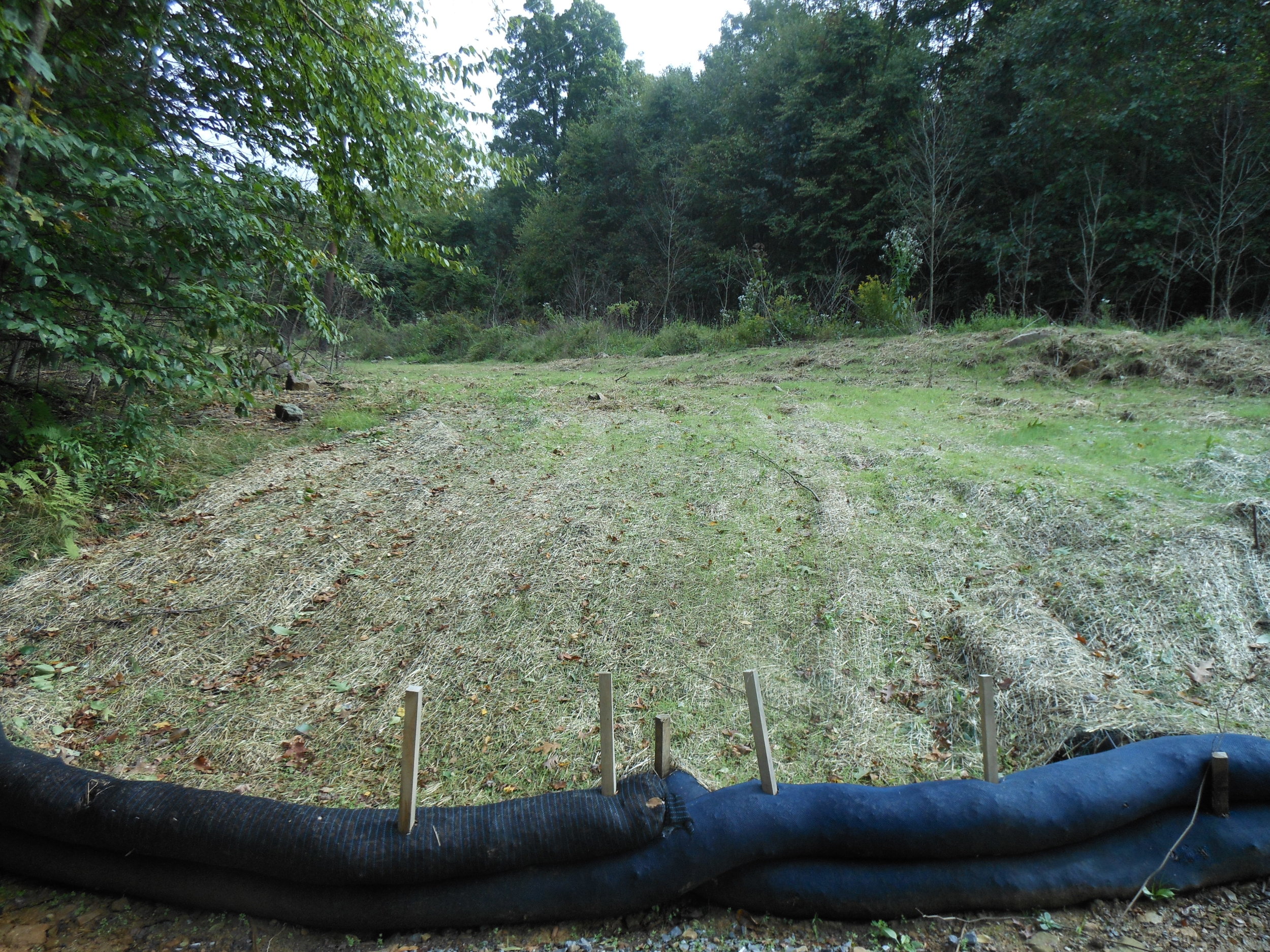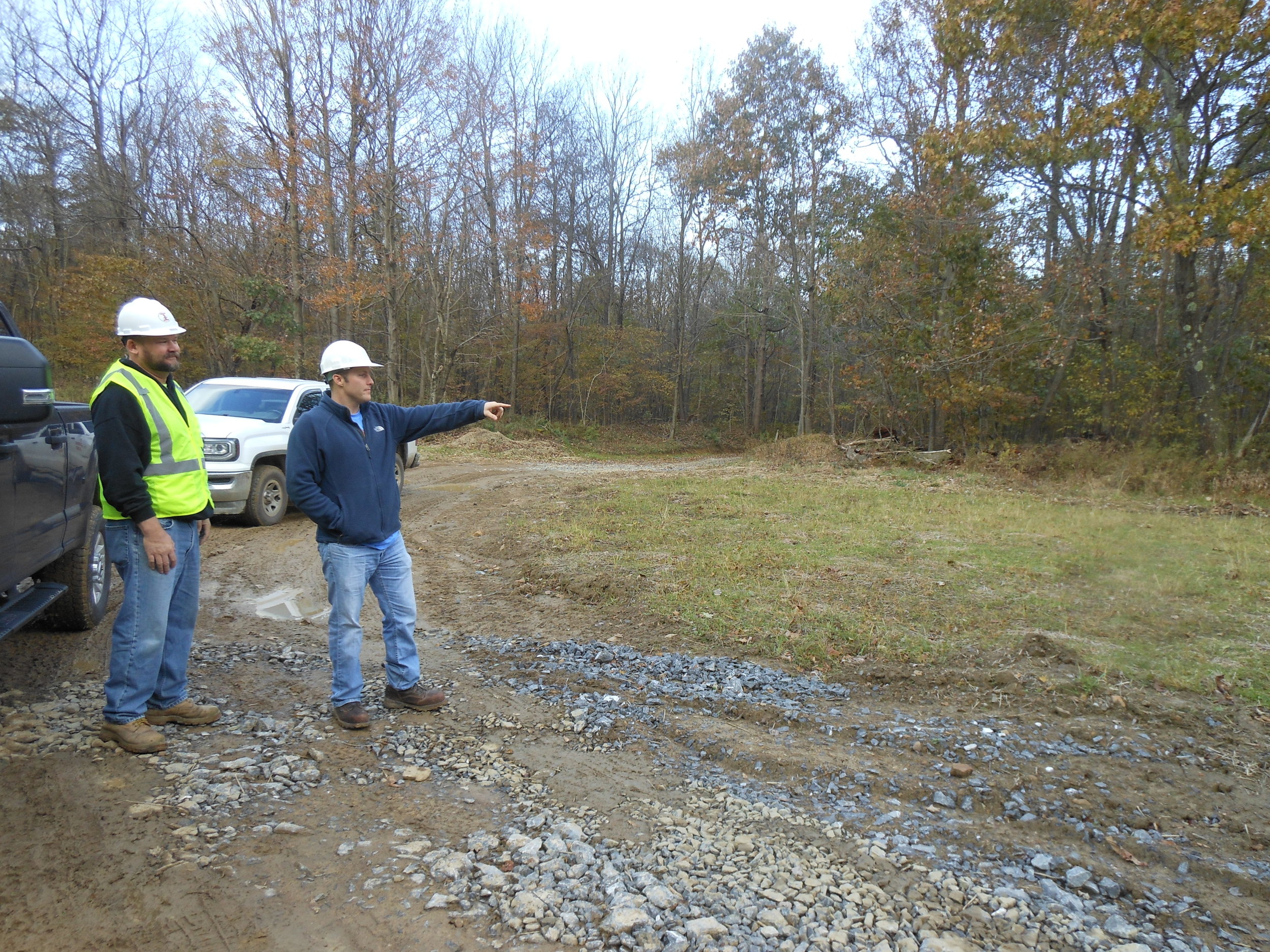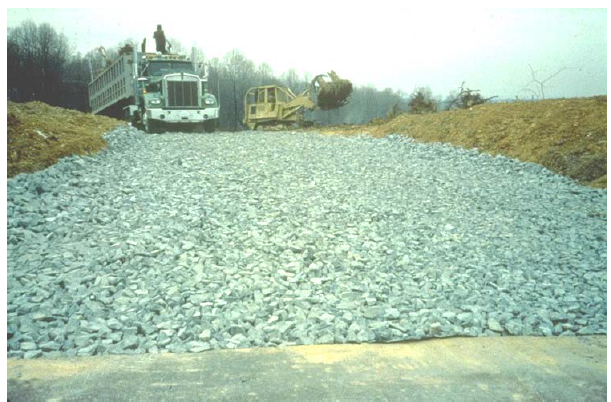Best Management Practices
Many times, passers see erosion and sedimentation best management practices (BMPs) and have no idea about their function. Many times, people are left wondering what those devices along a new worksite are or what they do. The purpose of those strange devices is simply to prevent erosion and sedimentation brought on by earth disturbing activities. Read below for descriptions of some of the most commonly used BMPs.
What Are Those Things?
Compost Filter Sock:
Sediment Removal Efficiency: High – Can be used in High Quality and Exceptional Value Watersheds
A compost filter sock is a type of compost filter berm. It is a mesh tube filled with composted material and is placed perpendicular to sheet-flow runoff to control erosion and prevent sediment from leaving disturbed areas. The compost filter sock retains sediment and filters out other pollutants including suspended solids, nutrients, and motor oil, allowing clean water to flow through.
Filter sock can be used in place of a traditional E&S BMPs such as filter fabric fence or straw bale barriers. Composts used in filter socks are usually made from a variety of biodegradable materials including yard trimmings, biosolids, manure and food residuals.
Compost Sock Washout:
A concrete washout facility designed utilizing compost filter sock to separate solids and other pollutants from water used in the cleaning of chutes, mixers, and hoppers of delivery vehicles. Wherever compost sock washouts are used, a suitable impervious geomembrane should be placed at the location of the washout. Compost socks should be staked in the manner recommended by the manufacturer around perimeter of the geomembrane so as to form a ring with the ends of the sock located at the upslope corner. Care should be taken to ensure continuous contact of the sock with the geomembrane at all locations.
Erosion Control Blanketing:
Erosion Control Blankets are a temporary E&S BMP, consisting of rolls of natural and artificial materials, which are typically installed by hand, liquid, spray-on, materials that make use of a bonding agent to hold natural or artificial fibers in place and shield soil from raindrop impact as well as retain moisture for the establishment of vegetation. Erosion control blankets should be used on all slopes that are 3H:1V or steeper and where potential exists for sediment pollution to receiving waters.
Rock Construction Entrance:
Sediment Removal Efficiency: Low – This device should not be used in High Quality and Exceptional Value Watersheds
Rock construction entrances are a temporary E&S BMP utilized to clean the tires of construction traffic exiting the site onto any roadway, either public or private. The large rocks (Min. 8” AASHTO #1) scrub and knock sediment off of the tires of construction traffic while driven over. Rock construction entrances should be underlain by geotextile to prevent rocks from sinking into the soil, rendering the construction entrance useless. This BMP requires maintenance to remain effective depending upon the amount of traffic at particular sites.
Pumped Water Filter Bag:
Sediment Removal Efficiency: Low – This device should not be used in High Quality and Exceptional Value Watersheds unless surrounded by a compost sock ring or operated in conjunction with a sump pit.
The primary function of a pumped water filter bag is to dewater work areas. Filter bags are used to filter water pumped from disturbed areas prior to discharging to surface waters. They may also be used to filter water pumped from the sediment storage areas of sediment basins and sediment traps. Bags should be located in well-vegetated (grassy) area, and discharge onto stable, erosion resistant areas.
Vegetative Stabilization:
All disturbed areas that have not otherwise been stabilized and have significant potential for erosion should be stabilized with vegetation. This includes graded areas where it is anticipated that future earthmoving will take place within the coming year. Areas that will be subject to earthmoving within 12 months may be stabilized with temporary seed mixtures, predominantly annual grasses. All others should be stabilized with permanent seed mixtures – predominantly perennial grasses. When final grade is achieved during non-germinating months, the area should be mulched until the beginning of the next planting season. However, the area will not be considered stabilized until a minimum uniform 70% vegetative cover of erosion resistant perennial species has been achieved. Critical areas – erodible soils, within 50 feet of a surface water, etc. – should be blanketed. Temporary erosion control BMPs that were installed for the earthmoving phase of project must remain in place and be maintained in working order until permanent stabilization is achieved.
Straw Mulch:
Mulches absorb rainfall impact, increases the rate of infiltration, reduce soil moisture loss due to evaporation, moderate soil temperatures, provide a suitable environment for germination, and protect the seedling from intense sunlight. All seeded areas should be mulched or blanketed to minimize the potential for failure to establish an adequate vegetative cover. Mulching may also be used as a temporary stabilization of some disturbed areas in non-germinating seasons.












